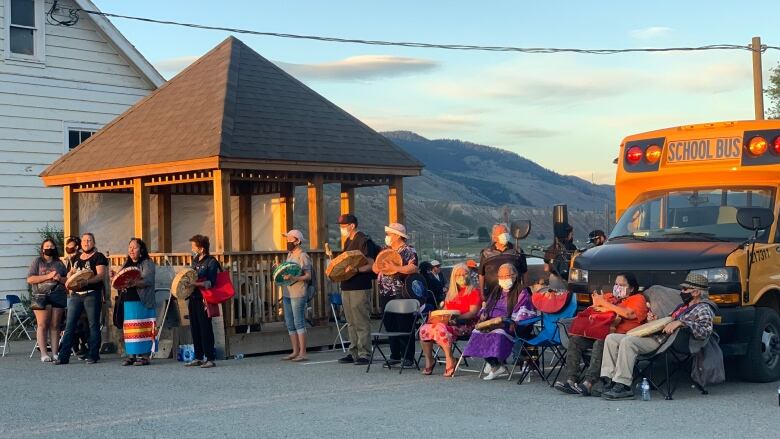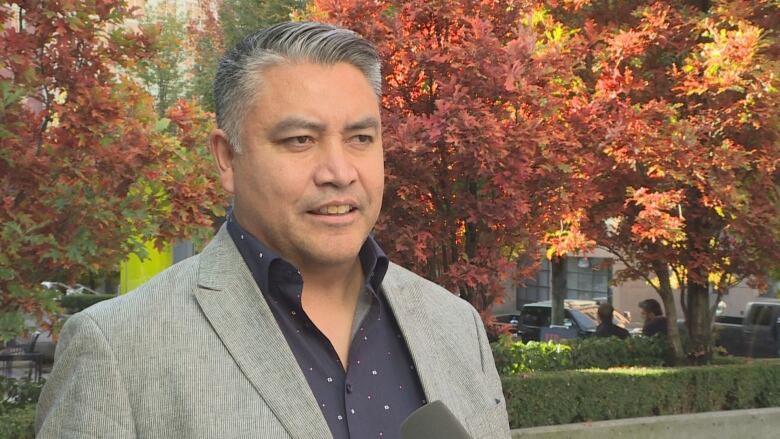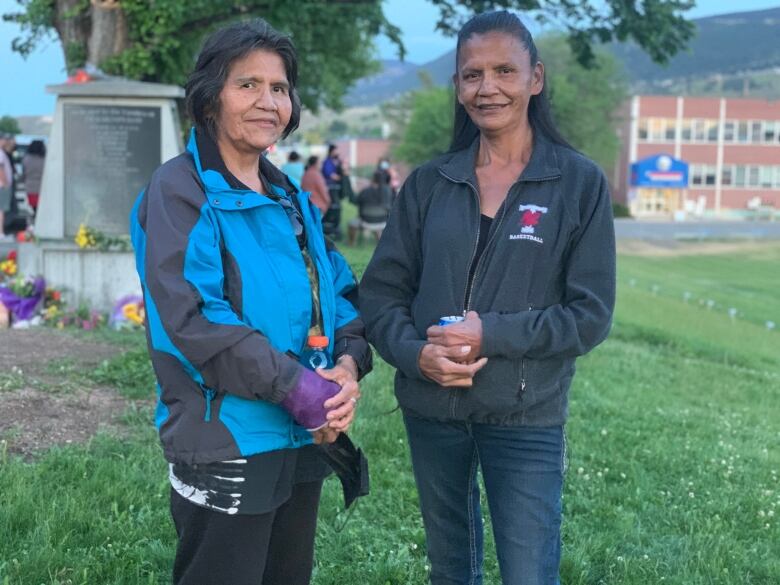Indigenous leaders, experts call for protection of sites of former residential schools
Tk'emlps te Secwpemc First Nation said remains of 215 children were found at unmarked site in Kamloops, B.C.

WARNING: This story contains details some readers may find distressing.
Indigenous leaders and experts in British Columbia are calling for the protection of sites of former residential schools after theTk'emlps te Secwpemc First Nation said the remains of 215 children were found at one such site in Kamloops, B.C.
They warn that this represents just a small portion of the thousands who died while the schools were in operation.
Linc Kesler, an associate professor at the University of British Columbia's Institute for Critical Indigenous Studies, said it's only a matter of time before the same type of technology used by theTk'emlps te Secwpemc First Nation reveals more physical evidence of the horrors of residentialschools across Canada.
"It's absolutely not an isolated incident," Kesler said.
On Thursday, Tk'emlps te Secwpemc saidpreliminary findings from a ground-penetrating radar survey uncovered the remains.
Mary Ellen Turpel-Lafond, director of the Indian Residential School History and Dialogue Centre at the University of British Columbia, agreedthat the residential school sites should be protected.
"We need to make sure they are controlled and protected so full investigations can be done,"Turpel-Lafondsaid.
'We're all grieving'
B.C. Assembly of First Nations Regional Chief Terry Teegeesaid he too would like the sites to be protectedbut bureaucratic red tape has added layers of complication.
Teegee said Tk'emlps te Secwpemcstarted the process of finding the remains20 years ago.
He said it would take all levels of government to come together in orderto remove barriers and provide the resources needed to identify and commemorate all the children who went missing while at residential schools.
"These children had a home. These children were loved by somebody," he said.

More than 100 people gathered in front of a sacred fire at the site of the Kamloops residential school Saturday evening, standing shoulder to shoulder to grieve.
Marie Narcisse was part of the crowd on Saturday. She attended the school as a child, as did her parents.
"So many times the oral stories of this place and many other places were told and it seemed as though nobody believed anybody," she said.

On Sunday, Tk'emlps te Secwpemc Kukpi7 (Chief) Rosanne Casimirsaid there will be a debrief with the nation's membership this week, adding that other chiefs across Canada are having similar conversations with their communities as well.
"We're all grieving," Casimir said. "There's so many unanswered questions that our membership wants. The world wants to know."
Casimir said the discovery adds a very dark chapter to Canadian history and the state-fundedresidential school system.
School closed in 1978
Narcisse and her younger sister lingered in front of the memorial at the site of the residential school for more than an hour.
In front of the school is a memorial with dozens of names etched on a plaque.At the base of it people have left flowers and notes.On top rests a tiny pair of shoes.

Historical records had indicated that 50 children died at the school, but this new discovery shows that estimate was likely dramatically low.
The Kamloops Indian Residential School was in operation from 1890 to 1969, when the federal government took over administration from the Catholic Church to operate it as a residence for a day school, until closingin 1978.
Searching for records
Enrolment at the school peaked in the early 1950s at 500,according to the National Centre for Truth and Reconciliation (NCTR). Those children would have come from First Nations communities across B.C.and beyond.
Tk'emlps te Secwpemc said they areworking with the BC Coroners Service, contacting the students' home communities, protecting the remains and working with museums to find records of these deaths.
Casimirpreviously told CBC News the missing children were undocumented deaths, some of them as young as three years old.
She said the findings are "preliminary" and a report will be provided by aspecialist next month.
Support is available for anyone affected by their experience at residential schools, and those who are triggered by the latest reports.
A national Indian Residential School Crisis Line has been set up to provide support for former students and those affected. People can access emotional and crisis referral services by calling the 24-hour national crisis line: 1-866-925-4419.
Corrections
- A previous version of this story stated that Linc Kesler was director of UBC's First Nations House of Learning. In fact, he no longer holds that position and is now associate professor at UBC's Institute for Critical Indigenous Studies.May 31, 2021 9:00 AM PT
With files from Briar Stewart, Joel Ballard and The Canadian Press












_(720p).jpg)


 OFFICIAL HD MUSIC VIDEO.jpg)
.jpg)



























































































